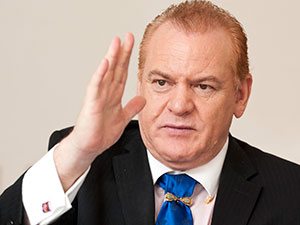
[miningmx.com] – THERE’S a growing suspicion that South Africa’s last great gold mine, the South Deep project on the West Rand, may prove to be its most disappointing after Gold Fields acknowledged it, like the project’s previous owners, would fail to have it deliver on its production promises.
Since its earliest development to its current position now, the deposit has refused to yield its treasures in a way its owners expected and promised. In the process, it has absorbed billions of rands of investment; yet two decades on, “the mine’ is still “a project’.
JCI, then a limb of a sprawling Anglo American, started South Deep. It was then taken over by the late Brett Kebble when he ran JCI in combination with his Western Areas.
Half of the project was sold to Placer Dome in the hope that North American know-how and capital would help bring South Deep to the 800,000 to 900,000 ounce/year to life. But to no avail.
The asset then switched hands with another North American owner, Barrick Gold, attempting to wrest gold economically from South Deep until it too sold the project to Gold Fields for about $1.5bn in an expensive game of pass the parcel.
More than eight years on, and with the music definitely stopped, Gold Fields CEO, Nick Holland, was moved to comment on May 7 that in respect of South Deep, he was now focusing on “inputs, not the outputs’.
It, therefore, looks like the 650,000 to 700,000 oz targets identified by Holland are now the subject of speculation again. This must be a bitter pill for shareholders who have already absorbed the 50,000 oz/year climb down in South Deep’s planned output announced by Gold Fields some two years ago.
“We believe South Deep could end up being a much smaller mine than previously guided and could take much longer to break-even than the company’s guidance,’ said Goldman Sachs in a report following Gold Fields’ March quarter figures.
Said Holland: “There is a target by the end of next year for the project to be cash flow positive,’ he said.
But it’s hard to believe the forecasts when Gold Fields acknowledges that the import of skills from Australia – supposed experts in mechanised mining – had been a failed experiment.
Speaking in February, Nico Muller, vice-president of Gold Fields’ SA operations (South Deep) since late 2014, delivered a withering assessment of how South Deep had not progressed under Australian guidance.
He described the operation as “dysfunctional’ – a view with which Holland concurred even though this was allowed to happen under his watch.
“He’s not the first person to have said this,’ said Holland when asked by Miningmx for his view of Muller’s assessment of South Deep. “The comments he made mirror my own,’ he said, adding that importing ex-pat skills had failed because “it was difficult to get them engage with the culture of South African mining’.
Now the approach is to source mechanised mining skills from within South Africa. “Local is lekker, there is no doubt. It took time to attract Nico, but we persuaded him to come.
“I would say he has got a better appreciation of the problems and so we’re breaking it [South Deep’s development] down into smaller projects,’ said Holland.
Analysts, meanwhile, continue to worry whether conditions at South Deep will improve at all.
During the March quarter, there was a decline in the grade at South Deep of what remaining production it has after large part of its older sections were suspended to allow for remedial action.
“All eyes will now likely shift to the companys second quarter results to decipher if the performance was a blip or part of a broader downward trend,’ said Andrew Bryne, an analyst for Barclays Capital in a Gold Fields note.
Said Holland: “We don’t worry what the mine will do three years from now because we have got to get the basics right. The culture is to do things properly and safely.’











